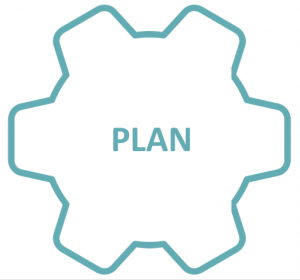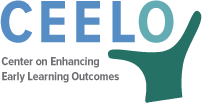 With a clear vision and mission established, early education leaders rely on the development of a thoughtful, well-defined plan before taking any action. “Measure twice, cut once” may feel like an unrealistic adage when facing a sense of urgency common in SEAs and LEAs, but careful planning with multiple partners can prevent the unintended consequences of poor planning, including wasted resources, mounting frustration, and lack of impact. While it was instructive to ask the Five Whys when forming a vision, asking the Five Hows are helpful with action planning.
With a clear vision and mission established, early education leaders rely on the development of a thoughtful, well-defined plan before taking any action. “Measure twice, cut once” may feel like an unrealistic adage when facing a sense of urgency common in SEAs and LEAs, but careful planning with multiple partners can prevent the unintended consequences of poor planning, including wasted resources, mounting frustration, and lack of impact. While it was instructive to ask the Five Whys when forming a vision, asking the Five Hows are helpful with action planning.
How do we develop a plan? Action planning guidelines and tools come in various forms though many share common elements. There are many resources for action plans or project management tools. A few examples include the Community Tool Box which describes strategic planning or VMOSA (Vision, Mission, Objectives, Strategies, and Action Plans). Another is Results-Based Accountability which offers a disciplined framework to achieve desired population and performance results by first identifying the end results or desired community conditions and working backwards, step by step, to identify successful strategies, policies and programs. Some organizations find the use of Logic Models and Theories of Action helpful to connect inputs and outcomes to the desired results as a first step in crafting more detailed, comprehensive plans. In essence, action plans examine what is to be accomplished, how it will be accomplished, who will be involved and accountable, when it will be accomplished, what resources are needed, and what measures will be tracked? Outcome-oriented facilitation is essential throughout the planning process to ensure full participation and a plan to which participants will commit. A sample action planning template is included below.
Are there different purposes for action plans? Each action plan is uniquely designed to address a specific issue within a specific context. Some plans are designed to solve problems, others to continuously improve the quality of existing services, products or conditions. The low rate of third grade reading proficiency in low-income communities is recognized widely as an urgent problem to be solved. The quality of preschool classrooms may be adequate, however local and state leaders may be committed to improving quality significantly. Problem-solving often carries a greater sense of urgency whereas quality improvement increases the likelihood desired results are obtained.
The difference between problems solving and quality improvement is subtle but distinct, and the processes differ in their approach as seen below:
The Problem Solving Process
- First Identify and select a problem
- Second Analyze the problem
- Third Generate potential solutions
- Fourth Select and plan the solution
- Fifth implement the solution
- Sixth Evaluate the Solution
The Quality Improvement Process
Planning
- First Identify the output (services, products)
- Second Identify the consumers (children, teachers, families)
- Third identify requirements for all consumers
- Fourth Translate requirements into objectives and specifications
Organizing
- Fifth Identify steps in the work process
- Sixth elect measurements for critical process steps
- Seventh Determine the capacity of the process to meet requirements
Monitoring
- Eighth Evaluate results and identify steps for improvement
- Ninth Recycle the process, beginning with Step 1
Will our plan work? Once developed, the plan may be reviewed by stakeholders to ensure it meets certain criteria. SMART plans have objectives which are Specific, Measurable, Achievable, Relevant, and Time-bound. Early education and human services may also examine HARD factors – Heartfelt (Is there an emotional attachment to the goal?), Animated (Are people magnetically attracted to and excited by the goal?), Required (Is this necessary, that which others cannot do without?), and Difficult (Is it challenging enough to warrant our commitment?).
Resources
- Guide to Results-Based Planning and Facilitation: Achieving Results and Equity for Vulnerable Children and Youth (National Results and Equity Collaborative)
- Logic Models and Theories of Change (What Works, 2015) (video)
- Developing an Action Plan (Center for Community Health and Development/Univ. Of Kansas, 2017)
- Developing an Action Plan Checklist (Center for Community Health and Development/Univ. Of Kansas, 2017)
- Innovation, Implementation Science, and Data-Based Decision Making: Components of Successful Reform (Detrich/Center on Innovations in Learning, 2013)
Activities
- Action Plan Form
- Sample Results-Based Accountability Action Plan Outline
- Results-Based Accountability Tools for Implementation
- Developing Strategic and Action Plans (Center for Community Health and Development/Univ. Of Kansas, 2017)
- Sorting Exercise and Card Decks for School Readiness (Fiscal Policy Institute)
